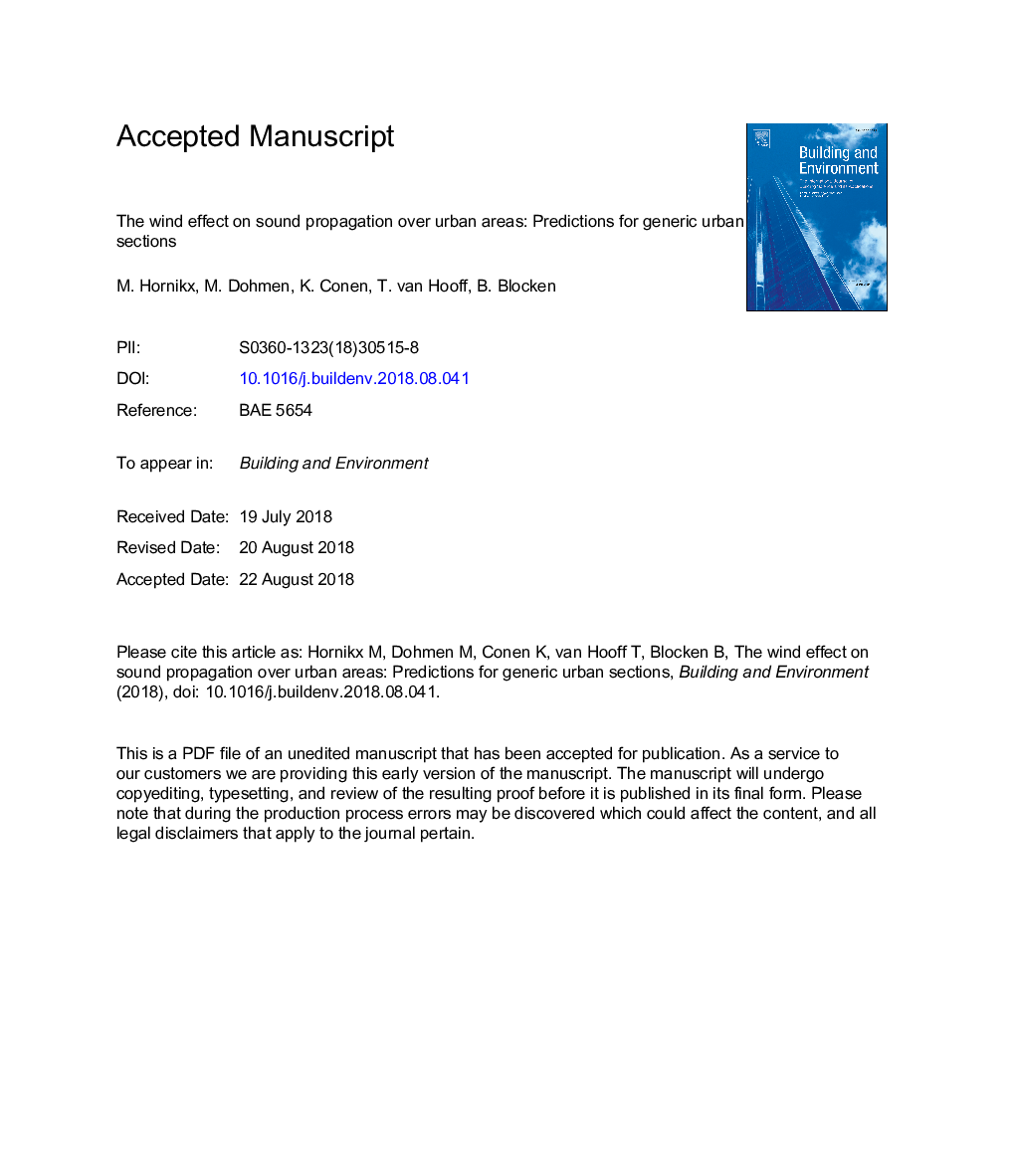| Article ID | Journal | Published Year | Pages | File Type |
|---|---|---|---|---|
| 11000972 | Building and Environment | 2018 | 36 Pages |
Abstract
The effect of a downward refracting atmosphere on distant sound propagation over various generic urban areas is predicted. The work uses a two-step approach, by first computing the wind field with computational fluid dynamics (RANS-CFD), and then adopting the mean wind field in a computational acoustics (PSTD-CA) method. These approaches were found to be valid for the studied geometries. For an urban configuration with multiple building blocks, a sound source is located in a street canyon, representing road traffic, and receivers are located at a distance up to 500â¯m. From results of calculations for various urban configurations, it can be concluded that: the sound levels increase due to the presence of a downward refracting atmosphere, and this effect is larger for higher frequencies; the wind effect ranges from 15 to 23â¯dB(A); the urban topology close to the source and receiver can largely influence the wind effect; whereas vegetated roofs have the potential to reduce sound levels without wind, in a downward refracting atmosphere the broadband effect is small (<2â¯dB(A)), however, a potential for reducing noise levels by roofs with low-frequency sound absorption has been identified.
Keywords
Related Topics
Physical Sciences and Engineering
Energy
Renewable Energy, Sustainability and the Environment
Authors
M. Hornikx, M. Dohmen, K. Conen, T. van Hooff, B. Blocken,
